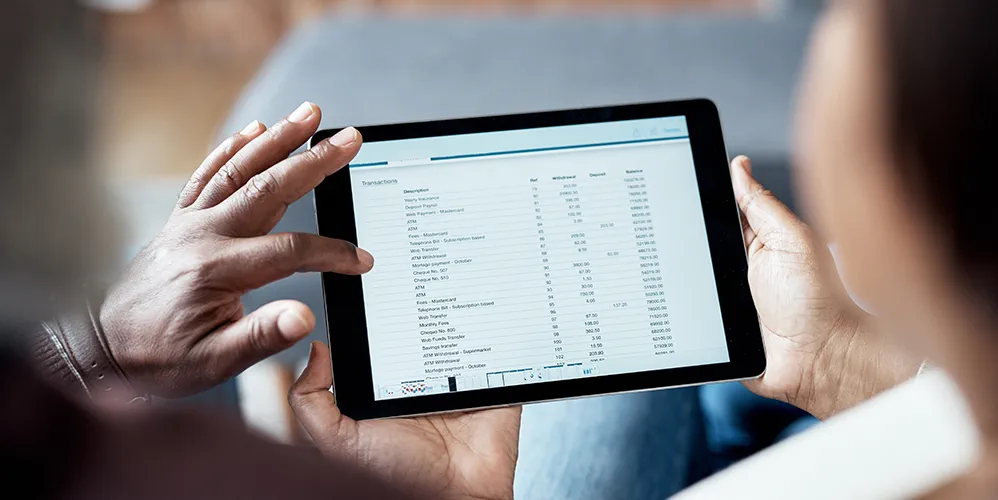
What is MICR Code? Understanding its Role in Banking Transactions
08 Jul 2024

Table of Content
If you have used or even seen a cheque book, you must have noticed a few code numbers located at the bottom of every cheque leaf. This is a unique code for only bankers to decode and it plays an important role in banking transactions. This code is known as the Magnetic Ink Character Recognition (MICR) Code. Through this blog, you will get a thorough understanding of what an MICR Code is and its purpose in banking.
What is MICR Code?
If you are wondering “what is MICR code?”, here is your answer. MICR, short for Magnetic Ink Character Recognition, is a 9-digit code that is located at the bottom of a cheque leaf. This unique code aids in the identification of a specific bank branch that is a part of the Electronic Clearing System (ECS). This code was introduced in the 1980s by the Reserve Bank of India (RBI) to ensure safety and effectiveness when it comes to payments. It comes with a character recognition technology which allows bankers to identify the bank branches, which in turn speeds up the cheque clearing process.
Each bank is assigned an exclusive Magnetic Ink Character Reader code that is located at the bottom of every cheque leaf. This unique code also helps ascertain that all banks using cheques for transactions are recognized by the Reserve Bank of India. Apart from the bottom of the cheque leaf, you can also get to know your bank branch’s MICR code online.
How does MICR work?
The MICR codes are printed with the help of magnetic ink, which prevents duplication and allows computers to read and decode information accurately, such as cheque numbers, account numbers, and routing numbers. It also enables computers to read characters that may have otherwise been obscured by bank stamps, signatures, cancellation marks, ink, and more.
Also Read: Understanding MICR: Full Form, Meaning, and Its Role in Banking
Components of MICR Code in Cheque:
The MICR Code in cheque consists of three parts:
- The first 3 digits represent the city’s pin code
- The next 3 digits represent the code of the bank
- The last 3 digits represent the code of the branch
Roles & Functions of MICR Code :
The MICR code in your cheque leaf plays an important role when filling an application form for the following:
- Investment Portfolios
- Mutual Funds
- SIPs
Features of MICR Technology :
Now that we have understood what an MICR code is, along with its components and functions, let us take a look at a few key features:
Magnetic Ink :
MICR characters are printed using a special type of ink that contains magnetic particles. This allows the characters to be easily recognized by magnetic sensors.
Printed Format :
MICR characters are usually printed in a specific font called E-13B or CMC-7. The characters have a distinct appearance, with a combination of numbers and symbols arranged in a specific order.
Location on Documents :
MICR characters are typically printed in designated areas on documents such as cheques. The positioning of the characters is standardized to ensure accurate reading by MICR readers.
High Accuracy :
MICR technology is known for its high accuracy in reading characters, even in the presence of dirt, scratches, or other forms of wear on the document. This makes it particularly suitable for the reliable processing of financial documents.
Readability :
MICR characters are read by magnetic sensors or readers that can quickly and accurately detect the magnetic ink patterns. This allows for efficient and automated processing of large volumes of documents.
Security :
The use of magnetic ink and the specific character set make it difficult for fraudsters to alter or counterfeit MICR-encoded documents. This adds a layer of security to financial transactions.
Applications :
MICR technology is primarily used in the banking industry for processing cheques. It facilitates the automation of cheque processing, including sorting, encoding, and verification of financial transactions.
Processing Speed :
MICR technology enables high-speed processing of documents, making it efficient for large-scale banking operations. cheques can be processed rapidly, reducing manual effort and improving overall operational efficiency.
Benefits of MICR in Banking :
The MICR Technology offers several benefits in the banking field, such as:
Accuracy :
MICR technology provides high accuracy in character recognition, minimizing errors in the processing of cheques. This is crucial for ensuring the correct identification of account numbers, routing information, and other critical details.
Efficiency :
The automated nature of MICR processing allows for high-speed and efficient handling of large volumes of cheques. This results in quicker transaction processing times and reduces the need for manual intervention.
Also Read: Understanding Cheques: Types, Features, Filling, Cancellation & Requests
Security :
The use of magnetic ink and the specific character set make it challenging for fraudsters to alter or counterfeit cheques. MICR-encoded information is more secure and resistant to tampering compared to traditional ink-based characters.
Standardization :
MICR technology is a standardized system adopted by the banking industry. This ensures interoperability and consistency across different banks and financial institutions, facilitating seamless cheque processing between entities.
Quick Verification :
MICR readers can quickly verify the authenticity of cheques and the accuracy of encoded information. This rapid verification process helps in preventing fraudulent activities and ensures the integrity of financial transactions.
Minimized Errors :
Automation reduces the likelihood of errors associated with manual data entry. MICR technology minimizes the risk of misreading characters, ensuring that the information on cheques is accurately captured and processed.
Future Trends in MICR Technology :
Magnetic Ink Character Recognition (MICR) devices have significantly transformed the banking sector by enhancing the precision, speed, and security of check and financial document processing. Despite the increasing shift towards digitalization, the persistent demand for efficient, dependable, and secure check processing underscores the enduring relevance of MICR technology.
The future trajectory of MICR technology is intricately tied to its integration with cutting-edge technologies such as Artificial Intelligence (AI), Machine Learning (ML), and Blockchain. These advancements are poised to augment the capabilities of MICR devices, enabling them to adapt to and address the evolving requirements of the financial industry.
Conclusion :
In conclusion, MICR technology provides significant advantages to the banking industry by improving accuracy, efficiency, security, and standardization in the processing of checks and other financial documents. Its widespread adoption underscores its importance in modern banking operations.
MICR technology has been a standard in the banking industry for many years, providing a secure and reliable method for handling paper-based financial transactions. While electronic forms of payment are becoming more prevalent, MICR continues to play a significant role in check processing and other financial document verification processes.
Also Read: Understanding Repo Rate: Definition, Importance, Current Rates & Impact On Home Loans
Popular Articles
Tag Clouds
Related Articles





IMPS in Banking – Full Form, Features, Transaction Limit, Charges & how it works




Unlocking Financial Efficiency: How Cash Management Services Transform Banking

-
Disclaimer
The contents of this article/infographic/picture/video are meant solely for information purposes and do not necessarily reflect the views of Bank of Baroda. The contents are generic in nature and for informational purposes only. It is not a substitute for specific advice in your own circumstances. Bank of Baroda and/ or its Affiliates and its subsidiaries make no representation as to the accuracy; completeness or reliability of any information contained herein or otherwise provided and hereby disclaim any liability with regard to the same. The information is subject to updation, completion, revision, verification and amendment and the same may change materially. The information is not intended for distribution or use by any person in any jurisdiction where such distribution or use would be contrary to law or regulation or would subject Bank of Baroda or its affiliates to any licensing or registration requirements. Bank of Baroda shall not be responsible for any direct/indirect loss or liability incurred by the reader for taking any financial decisions based on the contents and information mentioned. Please consult your financial advisor before making any financial decision.
What is NEFT? A Complete Guide to National Electronic Funds Transfer
Now, you might be wondering, “what is neft fund transfer?”. NEFT full form in banking refers to National Electronic Funds Transfer. It is a widely used electronic funds transfer system in India. It enables individuals and businesses to transfer funds from one bank account to another seamlessly. The system is managed and regulated by the Reserve Bank of India (RBI), providing a secure and efficient means of transferring money. NEFT transactions typically involve the sender's and recipient's bank branches, and customers can initiate transfers through various channels such as online banking, mobile apps, or by visiting their bank branch. It has become an integral part of the Indian banking system, facilitating quick and reliable interbank transactions.
Understanding EMI: Full Form Meaning, Calculation, and Factors
Know what EMI is, the full form of EMI, its meaning, definition, calculation methods, and factors affecting it. Learn everything about Equated Monthly Installment with this comprehensive guide from Bank of Baroda.

